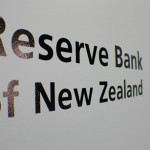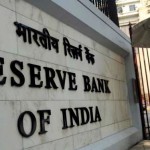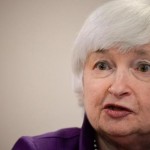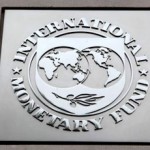The Monetary Authority of Singapore has issued a Monetary Policy Statement
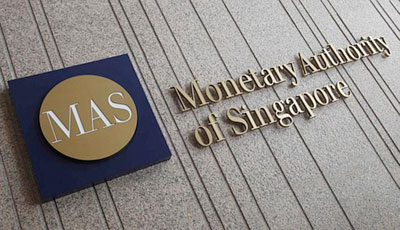
INTRODUCTION
1. In October 2015, MAS kept the Singapore dollar nominal effective exchange rate (S$NEER) policy band on a modest and gradual appreciation path, but reduced its rate of appreciation slightly. There was no change to the width of the policy band or the level at which it was centred. This policy stance was assessed to be supportive of economic growth into 2016, while ensuring price stability over the medium term.
|
Chart 1 |
 |
2. Since October 2015, the S$NEER has fluctuated around a strengthening trend, appreciating from below the mid-point of the policy band to the upper half of the band. Following a bout of depreciation pressures in January 2016 amid heightened global risk aversion, the S$NEER strengthened on broad-based US$ weakness, as financial markets revised downwards their expectations of the US Federal Reserve’s pace of interest rate normalisation. However, the average level of the S$NEER over the last six months as a whole has been unchanged compared to the six months prior to October 2015.
3. The three-month S$ SIBOR rose from 1.07% as at end-October 2015 to 1.25% by end-January 2016, before edging down to 1.06% as at end-March 2016.
OUTLOOK
4. Compared to expectations in October 2015, the Singapore economy is now projected to expand at a more modest pace this year, against the backdrop of a less favourable external environment. MAS Core Inflation is likely to pick up gradually over 2016 as the disinflationary effects of Budgetary and other one-off measures fade. However, the increase in core inflation will be milder than earlier expected, on account of a downward revision in the outlook for global oil prices, a reduction in labour market tightness, and weaker consumer sentiment. CPI-All Items inflation will remain negative throughout 2016. Over the medium term, core inflation is expected to average slightly below 2%.
Growth
5. According to the Advance Estimates released by the Ministry of Trade and Industry today, the Singapore economy registered 0% growth on a quarter-on-quarter seasonally adjusted annualised basis in Q1 2016, following the 6.2% expansion in Q4 2015. While output in the manufacturing sector increased after six quarters of contraction, this largely reflected a temporary ramp-up in pharmaceutical production in January. The performance of the rest of manufacturing and the trade-related services sectors continued to be held down by sluggish external conditions. Re-export volumes registered sequential contraction on average over the first two months of 2016. There was also a pullback in financial services activity from the previous quarter, amid the slowdown in bank lending to the region.
6. The outlook for the global economy has dimmed since October. The pace of expansion in the US economy is expected to be more modest than earlier anticipated on account of weakening investment and exports, even as the strengthening labour market continues to underpin private consumption. In the Eurozone and Japan, economic activity will be dampened by their appreciating currencies and weak external demand, notwithstanding recent efforts to boost growth through more accommodative monetary policy. China’s growth momentum is likely to moderate, as its services sector expansion is unlikely to be sufficiently strong to offset faltering industrial activity, amid supply gluts and weak global demand. The slower pace of growth in the G3 and China will in turn weigh on trade-related activity in the rest of Asia.
7. In the quarters ahead, subdued growth in Singapore’s major trading partners will continue to pose cyclical headwinds to the external-oriented sectors. Within manufacturing, the transport engineering and some precision engineering clusters will be hampered by the cutback in oil exploration activities, while the weakness in IT production and its supporting industries will also persist due to tepid final demand and ongoing corporate restructuring. In comparison, the domestic-oriented sectors should continue to provide some support to the economy, underpinned by sustained demand for healthcare and education services, as well as public infrastructure spending. The retail and real estate segments, however, are likely to soften as economic sentiment weakens. Overall, the Singapore economy is likely to grow at a modest pace of 1–3% in 2016, and the level of activity will be slightly below potential.
Inflation
8. MAS Core Inflation, which excludes the costs of private road transport and accommodation, has been subdued. The slight uptick in core inflation to 0.4% y-o-y in January–February 2016 from 0.2% in Q4 2015 was largely due to the smaller decline in the prices of oil-related items on a year-ago basis, as well as the dissipation of temporary disinflationary effects from Budgetary and other one-off measures, such as the enhanced medication subsidies introduced at the beginning of 2015. Meanwhile, CPI-All Items inflation remained muted at −0.7% y-o-y in January–February, as housing rentals and car prices fell further.
9. External sources of inflation will stay benign given ample supply buffers in the commodity markets and weak global demand conditions. Since October 2015, global oil prices have fallen considerably and despite the recent pickup, are likely to average lower for the whole of 2016 compared to last year. Domestic cost pressures are also expected to moderate in line with emerging slack in the economy. The domestic labour market is expected to see slightly reduced tightness, with wage growth projected to slow further over the course of 2016 amid softer employment conditions. While the resident unemployment rate has been fairly stable in recent quarters, it could increase slightly in the period ahead alongside a gradual rise in redundancies and declining job vacancies. At the same time, the pass-through of business costs to consumer prices will be constrained by the subdued growth environment. All in, MAS Core Inflation will rise over the course of this year at a milder pace than earlier anticipated. For the whole of 2016, it should come in within the lower half of the 0.5–1.5% forecast range, barring upside surprises to global oil prices. Over the medium term, core inflation is likely to average slightly below 2%.
10. Car prices and housing rentals will continue to dampen overall inflation amid the expected increase in the supply of COEs and newly-completed housing units, respectively. The 2016 forecast for CPI-All Items inflation was revised down to −1.0–0% in February, taking into account the step-down in global oil prices in late 2015 and the sharp decline in COE premiums at the beginning of this year. This forecast for headline inflation remains unchanged.
MONETARY POLICY
11. The Singapore economy is projected to expand at a more modest pace in 2016 than envisaged in the October policy review. MAS Core Inflation should also pick up more gradually over the course of 2016 than previously anticipated, and is now likely to fall below 2% on average over the medium term.
12. MAS will therefore set the rate of appreciation of the S$NEER policy band at zero percent, beginning 14 April 2016. This is not a policy to depreciate the domestic currency, and only removes the modest and gradual appreciation path of the S$NEER policy band that was in place.
13. The width of the policy band and the level at which it is centred will be unchanged.
14. This move to a neutral policy stance of zero percent appreciation follows the measured steps that MAS has taken to reduce the rate of appreciation of the policy band in January and October 2015 respectively.1 The actual outcome of S$NEER movements over the six months since October 2015 has in fact been a zero percent appreciation compared to the preceding six-month period. The cumulative effects of past S$NEER movements and the new policy path will continue to ensure price stability over the medium term.
Source: MAS









